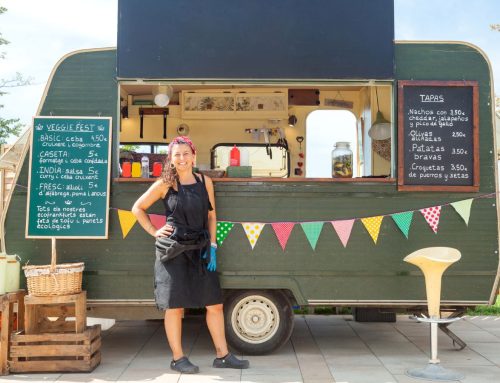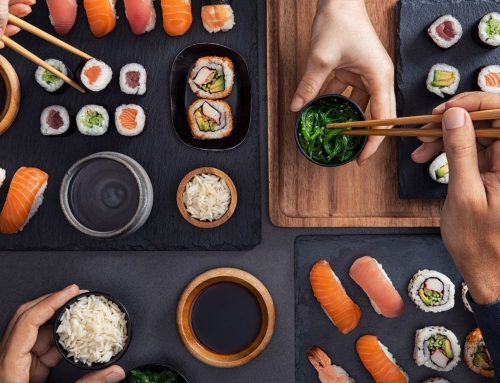What is the most important part of your restaurant? Most people would say the food. And they would be right. There’s no substitute for delicious, mouthwatering food. And when it comes to conveying how delicious your food is to new customers, I think we’d all agree that a picture is worth a thousand words — but it has to be the right picture. That’s why we’re going to cover all the food photography tips you need to help your restaurant’s food really stand out.
But first, we’re going to look at why good-quality food photography is so crucial for your restaurant.
Why It’s Important to Take Quality Food Photos
As we discussed in our latest post about restaurant trends, good food photography is more essential than ever before.
Why is such a small thing so important?
Well, let’s start by looking at a few essential stats.
According to one recent survey, 55% of 24-to-35-year-olds reported that they specifically look for food photos on a restaurant’s website. And another 44% said that they decided not to go to a certain restaurant because the food photos on that website were not enticing.
44%!
Think about that number for a moment.
That’s almost half of your prime potential customers, who might choose not to eat at your restaurant because of poor food photography. And the number was even larger for 18-to-24-year-olds, proving that this trend is only going to become more important with time.
This is why food photography has become an integral part of a solid restaurant strategy. Whether it’s for your website, social media, or print materials, it might just make all the difference between someone ordering your food and going with another restaurant.
Now that we see why this is so important for restaurants, let’s look at how you can improve your own food photos with 8 professional food photography tips. This way, your restaurant’s food will stand out for all the right reasons.
8 Food Photography Tips to Help You Improve Your Restaurant’s Photo Game
1. Choose the Right Gear
Some people immediately bristle at this, thinking that it means they need to drop a cool grand on the best camera. And that’s just not the case.
But, if you’re finding that your phone just isn’t giving you the results that you need, you probably do need a bit of an upgrade.
Again, this doesn’t have to be expensive. Look for a simple point-and-shoot camera that has more settings. Then, play around with those settings to see what gives you the best results.
Another good investment for your food photo goals is a tripod. These tools help to eliminate any camera shake and allow you to step back a little to get a good look at your composition. Plus, it opens up many other doors for creativity as you get more comfortable.
2. Use Natural Light Whenever Possible
There’s just no substitute for natural light. But it does take some planning since not all types of natural light will work in your favor.
Many photographers will wait until the “golden hour” — the hour just after sunrise and just before sunset — to get their best shots. Another trick is to wait for an overcast day.
When you find good natural light, set up your photo shoot near a large window to take advantage of it.
If you absolutely can’t make natural light work for you, then there are ways to work around it. Start off with one light source and use reflectors to soften the light to meet your needs.
3. Find the Right Angle
Once you lock down the best lighting, the right angle is your next key. And it’s going to be different for every setup and dish you use.
Play around to find the sweet spot for every dish. It might be head-on, directly level with the food, from the perspective of someone looking down at an angle, or from a bird’s eye view. You won’t know until you try several different angles.
4. Make It Fresh
The camera will pick up on any imperfections in your food. Whether it’s a little soggy, dry, or just old, it very well might come across in your photos and put off your audience.
Avoid this danger by planning to make all of your food fresh and plate it just before the shoot.
When shooting fruits and vegetables, a handy food photography tip is to keep them in the fridge covered by a wet napkin up until you’re ready. This will result in the freshest look, maybe even with a few beads of water for good effect.
5. Become a Minimalist
When it comes to food photography, less is definitely more.
After all, the food is the true star of the show. Don’t distract from it with too much clutter. This might even include the food itself — maybe you’re trying to get too many types of food in one shot. Start with a small amount. You can always add more later if you need it.
And don’t be afraid of having empty, or negative, space around your food. It’s a good thing! Learn how to use that negative space around your food to make it really pop.
6. Include a Human Touch
A human element can really add something special to your food photos. It helps your audience to identify with the scene and maybe even put themselves in it.
And there are many ways that you can do this. For example, you could take photos of…
- A waiter getting ready to deliver the food.
- Your chef preparing the food or adding the final touches to it.
- A family seated around a table, eating your food.
- A hand reaching out for the food.
There are many ways that you can include a human element in your photos. It might just be what you need to take your photos to the next level.
7. Learn About Food Styling
We’ve probably all heard stories of fast-food restaurants using shoe polish on their food to get the right look for commercials. But there are other, less scary tactics that you can use to style your food authentically so it looks camera-ready.
Some quick food styling tips include…
- Use fresh ingredients.
- Add a garnish.
- Use small plates and bowls.
- Style with napkins.
Many food stylists will even have spatulas, knives, and scissors on hand to manipulate the food to just the way they want it.
Food styling is a bit of a science and if you’re interested, I’m sure you’ll be able to find many other in-depth articles on how to do it best.
8. Learn From Others
Even if photography is a hobby of yours, you’re most likely not an expert. And that’s OK. As you keep taking photos, you’ll inevitably learn.
A great key to helping you improve is to watch how other professional photographers do it. Look at other restaurant websites, restaurant social media feeds, and photography portfolios where they feature food. These various channels can be a great source of inspiration for new angles, props, and even composition.
Life is all about learning, so don’t be afraid to explore.
____________________
Food photography is more than just the “right look.” It can really make all the difference in your restaurant strategy.
Whether you want to wow your audience on social media or freshen up your website with some mouthwatering shots, these food photography tips will help you do just that.
You May Also Enjoy Reading…







Leave A Comment